Friends I would like to share my yesterday learning yesterday i wok up morning 5 clock exactly 8 clock i came class first session was engaged by D.R. Prashanth sir he thought us LFA module LFA means logical frame work analysis before i dont have any idea for this module when sit thought us at that time only I got information which kind of I learn thats also down said mantion
Before starting with the activity design and the construction of the logframe matrix, it is important to undertake a structured analysis of the existing situation. LFA incorporates four main analytical elements to help guide this process:
References
Further Readings
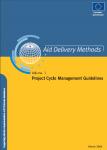
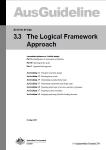
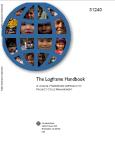
Training Material
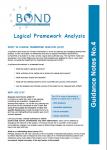
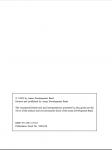
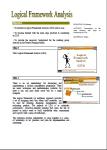
Before starting with the activity design and the construction of the logframe matrix, it is important to undertake a structured analysis of the existing situation. LFA incorporates four main analytical elements to help guide this process:
- Problem Analysis: involves identifying what the main problems are and establishing the cause and effect relationships which result in, and flow from, these problems (see also problem and preference ranking, or problem tree analysis as methods for problem identification).
- Stakeholder Analysis: having identified the main problems and the cause and effect relationship between them, it is then important to give further consideration to who these problems actually impact on most, and what the roles and interests of different stakeholders might be in addressing the problems and reaching solutions (see also stakeholder identification).
- Analysis of Objectives: objective trees should be prepared after the problem tree has been completed and an initial stakeholder analysis has been undertaken. This will give an image of an improved situation in the future.
- Analysis of Strategies: comparison of different options to address a given situation.
The Logical Framework Matrix (Logframe)
The results of the stakeholder, problem, objectives and strategy analysis are used as the basis for preparing the Logical Framework Matrix. The Logical Framework Matrix (or more briefly the logframe) consists of a matrix with four columns and four (or more) rows, which summarise the key elements of a project plan and should generally be between 1 and 4 pages in length. However, this will depend on the scale and complexity of the project.
How to Prepare The Logical Framework Matrix?
(Methodology adapted from BOND 2003; examples taken from EUROPEAN COMMISSION 2004)
First Stage ― TOP DOWN:
- Goal: starting at the top and using the information from the Objective Tree write the overall objective of the project. The overall objective may be beyond the reach of this project on its own, for instances: “To contribute to improved family health and the general health of the rive ecosystem”.
- Purpose: it describes the desired outcome that the project will achieve. This should be clear and brief. Example: “Improved river water quality”.
- Outputs: describe the project intervention strategy. There may be several outputs. Example: “1) Reduced volume of wastewater directly discharged into the river system by households and factories”.
- Activities: these are the tasks that are needed to achieve these outputs. There may be several for each output. Statements should be brief and with an emphasis on action words. Examples: “1.1) Conduct baseline survey of households and businesses; 1.2) Complete engineering specifications for expanded sewerage network, etc.”
- Inputs: when required to do so provide additional information, such as the means and costs, which are needed to carry out these activities.
Second Stage ― WORK ACCROSS:
- Objectively verifiable indicators of achievement: starting from the top to the bottom of the hierarchy of the objectives, begin to work across the logframe identifying the Objective Verifiable Indicators for measuring the progress in terms of quantity, quality and time. There are two kinds of indicators: 1. Impact indicators: related to the overall goal, helps to monitor the achievement and the impact of the project. Example: “Incidence of water borne diseases, skin infections and blood disorders caused by heavy metals, reduced by 50% by 2008, specifically among low income families living along the river”. 2. Process (our outcome) indicators: related to the purpose and results. These measure the extent to which the stated objectives have been achieved. Example: “Concentration of heavy metalcompounds (Pb, Cd, Hg) and untreated sewerage; reduced by 25% (compared to levels in 2003) and meets established national health/pollution control standards by end of 2007”.
- Sources and means of verification: the source of verification should be considered and specified at the same time as the formulation of indicators. This will help to test whether or not the indicators can be realistically measured at the expense of a reasonable amount of time, money and effort. The SOV should specify how, who and when the information will be gathered.
Third Stage ― BOTTOM UP:
- Assumptions: reflecting up from the bottom of the logframe, consider how, if each assumption holds, it will be possible to move to the next stage of the project. Assumptions are external factors that have the potential to influence (or even determine) the success of a project, but lie outside the direct control of project managers. Assumptions are usually progressively identified during the analysis phase. The analysis of stakeholders, problems, objectives and strategies will have highlighted a number of issues (i.e. policy, institutional, technical, social and/or economic issues) that will impact on the project ‘environment’, but over which the project may have no direct control. In the case of the river water pollution example, important assumptions might include issues related to: 1. Rainfall and river flow (beyond the project’s control, but potentially critical in terms of changes in levels/concentration of pollutants found in the river); 2. Householders and businesses willingness to pay for improved sewerage connexions.
Applicability
The logframe is applied when planning, implementing and evaluating specific projects and programmes within an action plan. It is valuable for carrying out logical checks during project design as well as for monitoring progress and reviewing activities and output during project implementation (PHILIP et al. 2008).
Using LFA for project or program design imposes rigour in assessing what is to be achieved and the assumptions behind what interventions and activities will be required. Many international donors, such as the Asian Development Bank and the European Commission, require projects they fund to be designed according to an LFA (WAGENINGEN UR 2010).
Advantages
- During initial stages, it can be used to test project ideas and concepts for relevance and usefulness
- It guides systematic and logical analysis of the key interrelated elements that constitute a well-designed project (THE WORLD BANK 2000)
- It defines linkages between the project and external factors
- During implementation, the logframe serves as the main reference for drawing up detailed work plans, terms of reference, budgets, etc (WAGENINGEN UR 2010)
- A logframe provides indicators against which the project progress and achievements can be assessed (WAGENINGEN UR 2010)
- It provides a shared methodology and terminology among governments, donor agencies, contractors and clients (THE WORLD BANK 2000)
Disadvantages
- Focusing too much on problems rather than opportunities and vision (WAGENINGEN UR 2010)
- Organisations may promote a blueprint, rigid or inflexible approach, making the logframe a straitjacket to creativity and innovation (THE WORLD BANK 2000)
- Limited attention to problems of uncertainty where a learning or adaptive approach to project design and management is required (WAGENINGEN UR 2010)
- The strong focus on results can miss the opportunity to define and improve processes
References 
AUSAID (Editor) (2005): AusGuidelines 3.3 The Logical Framework Approach. Sydney: Commonwealth of Australia. URL [Accessed: 07.08.2010].
BOND (Editor) (2003): Logical Framework Analysis. London: BOND (Networking for International Development). URL [Accessed: 06.08.2010].
EUROPEAN COMMISSION (Editor) (2004): Aid Delivery Methods, Project Cycle Management Guidelines . Brussels: European Commission - EuropeAid Cooperation Office. URL [Accessed: 07.08.2010].
SALDANHA, C.; WHITTLE, J. (Editor) (1998): Using the Logical Framework for Sector Analysis and Project Design: A User’s Guide. Manila: Asian Development Bank. URL [Accessed: 22.04.2012].
PHILIP, R.; ANTON, B.; BONJEAN, M.; BROMLEY, J.; COX, D.; SMITS, S.; SULLIVAN, C. A.; NIEKERK, K. van; CHONGUICA, E.; MONGGAE, F.; NYAGWAMBO, L.; PULE, R.; BERRAONDO LOEPEZ, M. (2008): Local Government and Integrated Water Resources Management (IWRM) Part III: Engaging in IWRM – Practical Steps and Tools for Local Governments. Freiburg: ICLEI European Secretariat GmbH. URL [Accessed: 17.04.2012].
THE WORLD BANK (Editor) (2000): The Logframe Handbook: A Logical Framework Approach to Project Cycle Management. Washington DC: The World Bank. URL [Accessed: 23.07.2010].
WAGENINGEN UR (Editor); PPM&E Resource Portal (Editor) (2010): Participatory Planning Monitoring & Evaluation, Managing and Learning for Impact in Rural Development. URL[Accessed: 23.07.2010].
Further Readings 
EUROPEAN COMMISSION (Editor) (2004): Aid Delivery Methods, Project Cycle Management Guidelines . Brussels: European Commission - EuropeAid Cooperation Office. URL [Accessed: 07.08.2010].
These Guidelines have been prepared to support ongoing improvements in the quality of EC development assistance. Part 2 offers an excellent description of the logical framework approach and how to construct the logframe matrix.
AUSAID (Editor) (2005): AusGuidelines 3.3 The Logical Framework Approach. Sydney: Commonwealth of Australia. URL [Accessed: 07.08.2010].
These guidelines present the Logical Framework Approach, with the analysis of the situation and how to prepare the related matrix.
THE WORLD BANK (Editor) (2000): The Logframe Handbook: A Logical Framework Approach to Project Cycle Management. Washington DC: The World Bank. URL [Accessed: 23.07.2010].
This handbook summarises the rationale and essential elements of the logframe for practitioners. In its Annex #1, the document presents examples of logframe Matrixes of typical projects of the Bank.
Training Material 
BOND (Editor) (2003): Logical Framework Analysis. London: BOND (Networking for International Development). URL [Accessed: 06.08.2010].
This short tutorial presents a three stages process to prepare the Logical Framework Matrix, with examples and tips.
SALDANHA, C.; WHITTLE, J. (Editor) (1998): Using the Logical Framework for Sector Analysis and Project Design: A User’s Guide. Manila: Asian Development Bank. URL [Accessed: 22.04.2012].
The logical framework is presented as a conceptual and analytical tool for undertaking sector analysis, project planning, and project management. This guide emphasises the basic concepts and underlying processes inherent in applying the logical framework. This guide uses a simplified example from the transport sector to illustrate these concepts and processes.
UNSO (Editor) (2000): Logical Framework Analysis. Presentation at the Capacity Building Workshop for Dryland Management, Beirut Lebanon May 3-5 2000. UNSO (Office to Combat Desertification and Drought) . URL [Accessed: 06.08.2010].
This presentation gives an introduction to the Logical Framework Analysis (LFA) and its uses, so the readers will become familiar with the main steps in conducting LFA. It also gives the necessary background for to prepare the Project Planning Matrix.
Important Weblinks
http://www.ausaid.gov.au/ [Accessed: 27.05.2010]
This guide by AustralianAID presents a range of downloadable documents on every step of a project cycle.
http://portals.wi.wur.nl/ [Accessed: 27.05.2010]
This website is essential in providing introductions to project and program management, as well as providing a quick selection of key resources in relation to specific areas of the Logical Framework Approach.
http://programs.online.american.edu [Accessed: 30.04.2015]
A short description of the structure an components of a logical framework.
Thank you friends




No comments:
Post a Comment